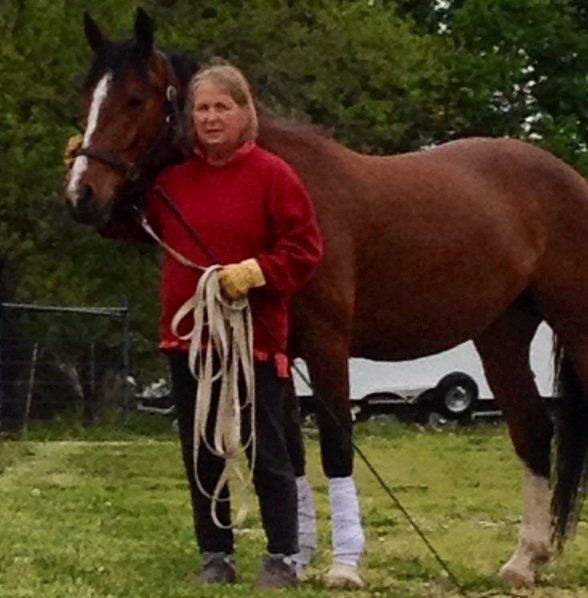U.S. Horsemanship
The Development of Riding in America
Why U.S. Horsemanship?
It’s personal. As a kid in the ‘60s I had the chance to see things that were part of our history and now 50 years later some of that history has faded away. And frankly, I don’t want to see it disappear. I want the young U. S. horsemen and women to have the chance to know what came before them, to realize the hard work, pride and tradition that undergirds horsemanship in the United States.
I stood at the rail in Madison Square Garden watching great riders like Bill Steinkraus, Kathy Kusner, Frank Chapot, Hugh Wiley, the d’Inzeo brothers, Tom Gayford, the Argentine team, and the Irish Team etc. I saw amazing horses like Untouchable, Bold Minstrel, Riviera Wonder, Ksar d’Esprit, Nautical, Snowbound, Aberali, Sinjon, Nautical and Snowman. I Stood right next to a puissance wall when the height of 7’1″ was achieved.
I remember hearing the horse canter up, suddenly a grunt and no more hoof beats, the ears appeared, then knees, then the rest of the horse. Silence was followed by a thud and grunt as the horse cantered off amid audience cheers.
I remember feeling horror when, as a child rider in a bareback over fences class at Hollandia Farms, when the judge, Gordon Wright, and the ring steward, leapt out of the path of my horse as he bolted for the gate.
Some years later when I was showing in equitation I remember the awe people had for a young instructor who began to bring his students from New Jersey to our shows on L.I. His name was George Morris.
I also remember the controversy about Vladmir Littauer and his forward seat programs. 40 years later, I learned that he was a close friend of my instructor.
The American Horse Shows Association kept a list of approved /registered riding facilities and from this list I chose to attend the Potomac Horse Center to achieve certification as a riding instructor and trainer. Certified in 1968 and I headed for my new job in Kansas City, Missouri.
I was fortunate to meet a few Cavalrymen who’d been trained at Fort Riley. One gentleman had been a Veterinarian at Ft. Riley. Dr. Riling was too old to work on the horses any longer but he spent hours teaching me.
We showed over terrific outside courses at Fort Leavenworth and Fort Riley, and became friends with Captain William C. Meyer. Meyer was a gruff old soldier who had taken pack trains into the Gobi Desert and had cared for Emperor Hirohito’s horses after the War. His knowledge about horses, riding, and horse trading was bottomless.
The time was before the birth of the USDF and Lowell Boomer and his riders came down from Nebraska to compete in local hunter shows.
In the late ‘70s I was employed by Paul and Dodi Seymour in Wichita. Dodi is Jim Wofford’s sister, daughter of Col. Wofford. I was privileged to visit Rimrock Ranch where Olympic horses had been bred and so many amazing horsemen had been trained. It was like walking on hallowed ground.
We are living in a new generation and everything, including the horse industry, races forward at warp speed. I find myself and my counterparts at the edge of history, both history that would fade away and new history. The glorious history of US Horsemanship, the sportsmanship, the tradition, the roots of it all needs to be saved.
The records need to be kept.
I’ve been fortunate to make friends with other people who see value in the history of horsemanship in the U.S. I especially enjoy reading through the forums posted by the good people at The Society of the Military Horse at: http://www.militaryhorse.org/. If you love American history you should visit their site.
And I love to hear from readers who who have passion and opinions about American Horsemanship. I hope that you’ll add your comments to this blog.
For me, U.S. Horsemanship history is personal.
Thanks for reading and commenting.
Barbara Ellin Fox.
Blog Posts
Newsletter Sign up and get free The 1912 French Cavalry Manual!
If you’d like to keep up to date on all of the things happening at US Horsemanship why not sign up for US Horsemanship News? Signing up is simple. Just add your name and e-mail address to the subscription form , below right, and click subscribe.
When you sign up, you will receive an email to confirm your subscription. Please activate the link. Following that you will receive instructions for downloading The 1912 French Cavalry Manual. The Riding Instructor News is FREE and The 1912 French Cavalry Manual is my thank you gift to anyone who subscribes.

